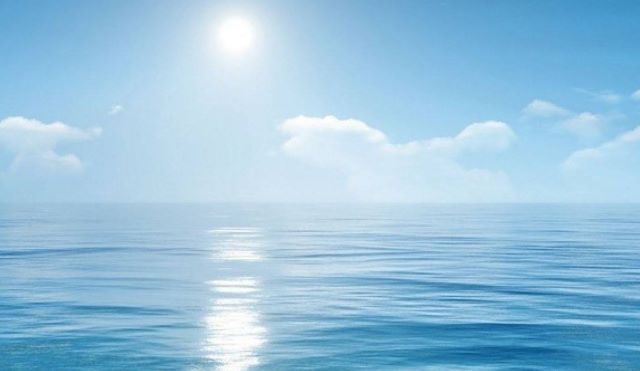
In 2021, the University of Alaska Fairbanks announced that a large-scale research project at its Geophysical Institute had revealed insight into the relationship between surface debris on glaciers and the rate at which they melt.
The work was touted as the first global assessment of Earth’s 92,033 debris-covered glaciers.
It was the first step to enable projection of how these debris-covered glaciers are going to evolve in the future and how they’re going to affect glacial runoff and sea level rise, said glaciologist David Rounce, the lead author of a paper published in Geophysical Research Letters, a publication of the American Geophysical Union.
Rounce researched while at the Geophysical Institute. The effects of debris on regional and global projections of glacial melt had been unknown due to the lack of accurate estimates of debris thickness, according to the study.
Boulders, rocks, and sand cover about 5% of Earth’s ice caps and mountain glaciers.
Alaska is one of the regions with the most debris cover.
Rounce and Geophysical Institute glaciology professor Regine Hock, a co-author of the study, had been working on the problem since 2017 through their participation in NASA’s High Mountain Asia Team and the agency’s Sea Level Change Team.
The researchers used a combination of elevation change data and surface temperature data from satellite imagery to determine the thickness levels for the entire surface of each of the world’s debris-covered glaciers.
The research findings will enable improved risk assessment for communities located near debris-covered glaciers.
Rapid melting can lead to the formation of glacial lakes, which create potential flood hazards.
Alaska’s Kennicott Glacier in Wrangell-St. Elias National Park and Preserve played a crucial role in the study, serving as a source of validation for the research.
Kennicott was singled out because it’s one of the few debris-covered glaciers in Alaska that has debris thickness measurements and surface melt measurements beneath debris.
Glaciers are melting faster than ever. Glacial retreat threatens devastation. For billions of people, meltwater flows are changing, causing floods, droughts, landslides and sea level rise, and damaging ecosystems.
To raise awareness about the role of glaciers, snow, and ice in the climate system and the hydrological cycle, as well as the economic, social, and environmental impacts of the impending changes in the Earth’s cryosphere, the United Nations has announced that March 21 will be the first-ever World Day for Glaciers.
As part of the International Year of Glaciers’ Preservation 2025, a joint celebration of the World Day for Glaciers and World Water Day has been organized to highlight the interconnected challenges of water availability and climate change.
According to the UN, this combined event will serve as a platform for dialogue and action regarding the state of the world’s glaciers and the impacts of the melting cryosphere on global water availability, food security, and energy security.
The 2025 global campaign for the World Day for Glaciers and World Water Day will highlight the impacts of glacier changes on people living in mountainous regions and downstream communities, as well as on ecosystems and particularly vulnerable groups, including Small Island Developing States (SIDS), emphasizing the urgency of water-related adaptation strategies.
The event will bring together leaders, policymakers, scientists, and civil society to address the preservation of glaciers and ensure sustainable water availability.
They aim to raise awareness of the role of glaciers in the climate system and water cycle while sharing best practices for mitigating and adapting to their accelerated melting.
High-level sessions with government officials and UN leaders will outline strategies for protecting glaciers.
The event is co-sponsored by several countries, including Barbados, Peru, Senegal, Singapore, Tajikistan, Switzerland, United Arab Emirates as well as specialized agencies of the UN including UN-Water, the World Meteorological Organization, the United Nations Educational, Scientific and Cultural Organization, the United Nations Office for Disaster Risk Reduction, the International Atomic Energy Agency, the International Union for Conservation of Nature, and the United Nations University Institute for Water, Environment and Health.
Glacial retreat threatens devastation.
For billions of people, meltwater flows are changing, causing floods, droughts, landslides and sea level rise, and damaging ecosystems. #WorldWaterDay pic.twitter.com/pE52rUeByn— UN-Water (@UN_Water) March 14, 2025
🏔️ Glaciers are sensitive indicators of climate change and are retreating globally due to rising temperatures.
📊Glacier monitoring provides important data for climate adaptation and mitigation strategies, and it needs to be expanded. #Glaciers2025 pic.twitter.com/KXi6Y8IPrG
— World Meteorological Organization (@WMO) January 6, 2025
Glaciers are melting at an unprecedented rate, threatening water security for billions. On March 21st, 2025, on the sidelines of the celebration of the inaugural World Day for Glaciers and World Water Day, ICIMOD invites you to join two virtual events addressing this urgent… pic.twitter.com/qg5mABLpOl
— ICIMOD (@icimod) March 18, 2025
🌍 Glaciers and Global Partnerships💧🏔️
Join NARO Representative, Samuel Tumiwa at the High-Level Celebration of the World Day for Glaciers & World Water Day 2025 at UNHQ on March 21, 2025.
Glaciers play a vital role in sustaining freshwater supplies for millions of people,… pic.twitter.com/WSGegqDspN
— ADB North America (@ADB_America) March 18, 2025
The U.S. Army Corps of Engineers has been tasked with…
Brown and Caldwell, a leading environmental engineering and construction firm,…
Humboldt State University, one of four campuses within the California…